Maurice Harteveld, Thomas van den Brink, and Foteini Tsigoni
The Dutch National Museum of Antiquities (Rijksmuseum van Oudheden) in Leiden closed the exhibition on ‘Byblos, The World’s Most Ancient Port City’ on 12 March 2023. Before the Leiden exhibition, a related exhibition “Byblos et le Louvre” in Paris commemorated the first French-led excavations in Byblos (Renan 1864, XIX-XXXIII). That work made it possible to highlight “the importance of this strategic port in different periods of history”, as the French exhibition stated. The Leiden elaboration on the first ‘world port-city’ illustrated a wider variety of studies to its origins and development (Kertai & Zaven 2023). This included the subsequent eras in which Byblos’ identity further transformed. Supported by the narrative of maritime commodity transport, the exhibition provided simple and reliable means to reflect essential indicators of a port-city. Still, since our visit, we continue to question if this was all. What particularly sticks is the statement that Byblos is ‘the world's oldest port-city’. From the exhibition's first announcement until after a visit, the question remains: is it? And, even if not the oldest, what is the specific notion of a port-city in this region during antiquity?
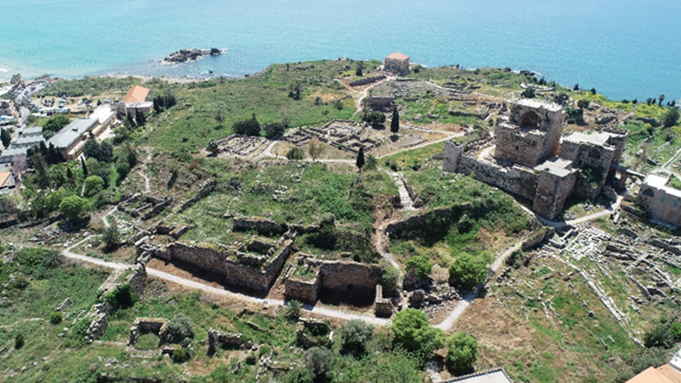
Maritime Roots
The exhibition’s narrative was quite clear: Byblos has existed as a fishing village on the coast of present-day Lebanon at least since 6500 BCE. David Kertai, architect, ancient historian, archaeologist and the exhibition's curator, promised to take the public on a journey to the dawn of sea trade, emerging 5000 years ago, on the basis of which Byblos may be called the first international port city in the world (De Volkskrant 2022). Masterpieces from the collections of renowned international museums underline how generations of Egyptians left their marks on this place over thousands of years. The influence by Assyrians, Babylonians, Phoenicians, Greeks and Romans thereafter was also touched upon.
The Byblos exhibition provided the public with concise insights in crucial eras of Byblos, each in a different exhibition room. A major focus of the exhibition was the interaction between Byblos as a city-state with Pharaonic Egypt, which became prevalent at around 2000 BCE. The exhibition also provided a longue durée perspective, showcasing the cross-cultural character of Byblos during the Hellenistic and Roman periods, and started with the “genesis of the port”, supported by a wall panel entitled “the port-city emerges”. In a video recorded on-site, the Dutch ancient historian and assistant curator Jona Lendering informed the public on how a natural bay provided an inland shelter “on the eve of being a port”, and how this harbour thereafter gained meaning for the early settlement inseparable from international maritime trade. This scope also guided experiences of spirituality, as witnessed in foreign artifacts being sacrificed in the temple near the city’s common well. Specifically, the many excavated sacrificial stone anchors (fig.1) dated to the last dynastic centuries of the Egyptian New Kingdom uniquely underpinned this spiritual maritime mindset (1100-700 BCE) (cf. Frost 1969, 1970).
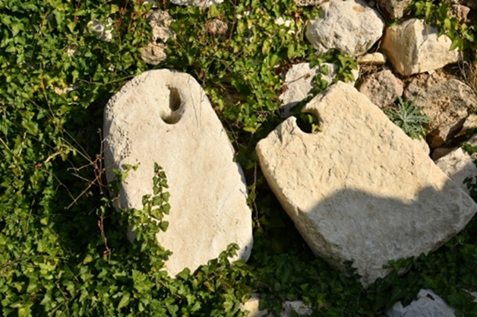
Ancient Trade Connections and Material Representation
The exhibition followed more or less a linear historical timeline directed to support the idea that Byblos is a port-city, a world port-city. The items showcased provided material biographies that emphasized the importance of the commodities’ trade for the city’s inhabitants; for example, gigantic cedar trees taken from nearby forests on the Lebanese mountains that followed the first expeditions to the region by the pharaohs around 3200 BCE (fig.2). The commodity consisted of huge trunks that first reached the port-city before they subsequently could embark on their overseas journeys to Egypt. These ‘international’ trade relations between the city state of Byblos and the Pharaonic kingdoms could be seen through the case study of the Uluburum shipwreck, a shipwreck found near the southwestern coast of Turkey and dating back to the 14th century BCE. The finds of the shipwreck point to interesting cultural relationships and trading routes during the later Bronze age, which may already have been established earlier as seen through Byblos’ relation with the Pharaohs (Pulak 1988; Welter-Schultes 2008). Based on the importance of Byblos in this international transport, it seems reasonable that it is used as a central criterion in the definition of Byblos as a port-city, together with an emphasis on its exchanges between Lebanon and Egypt, in the exhibition.
Moreover, the odd cargo innovated shipbuilding with sizes up to forty metres (Wachsmann 1998; Fabre 2005, p. 49, 90-2). This achievement was also recognised in using the hieroglyph ‘kbn.t.’, meaning ‘seaworthy ship’, throughout Egypt during the Middle Kingdom (2055-1650 BCE). Meanwhile, the Ancient Egyptian name for Byblos was ‘kbn.’ (fig.3). Only later it was replaced by Byblos in Ancient Greek, while today the city is locally known as Jbeil (also Gebail or Jubayl).
The exhibition did not reveal anything on how the transport of the cedar trunks down from the mountains was executed and how to load and unload them on ships, but certainly stimulated our curiosity. Historic studies directed us to among others a tomb at Qubbet el-Hawa, in the far south of Egypt near Aswan, and rocks along the Wadi Hammamat on a route connecting the Red Sea and the Nile. The tomb inscriptions recorded the expeditions of Pepinakht with Byblos-type vessels (2278-2247/2216 BCE), and the rock paintings depicted a similar expedition to the Land of Punt in northern Egypt (2009–1997 BCE) (first account cf. Montet 1928 & 1954; Erman & Grapow 1931, p. 118; Horn 1963). After the cedar had arrived from overseas, it had to pass the Egyptian cedar overseer Idu. He was the first known special official at the Egyptian court charged with the management of the cedar wood and was responsible that it was delivered at the right institutions and persons (c.1250 BCE, in acc. to the exhibit).
In addition, inlands, the huge cedar trunks had also innovated urban and architectural design, particularly of the temples of the New Kingdom. The Egyptian government architect Ineni for instance used the Byblos cedar for a new chief ‘hypostyle’, or colonnaded hall, to extend the Temple of Karnak about 800 km south of the Nile delta during the reign of Thutmose I (1506-1493 BCE). The appointment of a cedar official suggests that the use of cedar was not taken lightly. The institution could last until the reign of Thutmose III (1479-1425 BCE), when these wooden columns became replaced by stone alternatives (first account centered in the expo cf. Piehl 1885; in addition Breasted 1906, p. 41-2). All kinds of cedar wood miniatures were found in the ancient king’s graves from the same era in this region, possibly remnants of wooden temple construction. A typical wooden vessel of the 11th Dynasty (2080-1940 BCE) served as a welcome exhibit exemplary of this practice (fig.4).
In the slipstream of cedar import, Egyptians also imported resin, lapis lazuli, silver, and tin from the Levantine coast. Egyptian and Nubian gemstones, gold, linen, and ivory of elephants - all excavated in Byblos - had been exported and shipped to the port-city, perhaps in return for the cedar. In addition, burial relics found in the graves in Byblos revealed the import of Egyptian goods, such as a wide variety of Ancient Egyptian vases (3000-2100 BCE) and jugs (2500-2000 BCE). The age-old tight connections to the long-distance Nile territory support the notion of a port-city.
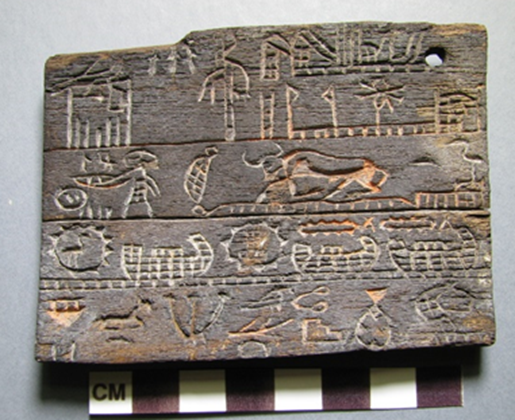
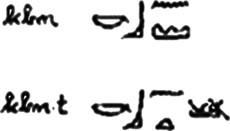
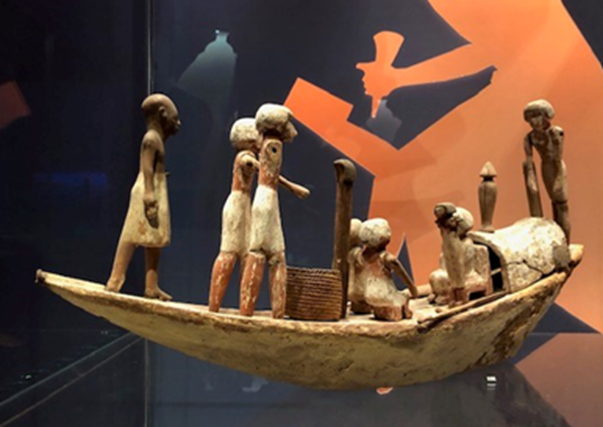
Cultural Exchange Networks and Material Representation
An astonishing wealth was collected in Byblos, as the exhibition narrative continued. Other excavated objects included sculptures of animals, such as hippos, lions, baboons, and monkeys, and humans. They were mostly found in the temple areas, which might suggest that they are related to getting favours of the gods. Representing an array of animals living in the ecosystems along the Nile basin, from the arid main river delta to the tropical equatorial lakes, they witnessed long-distance exchange. Newcomers and short-stay residents brought them from their homelands. Also, many sculptures of typical Egyptian deities were found in the city. Some objects look Egyptian at first glance, but were identified as made in Byblos, as the exhibition underlined (Kertai & Lendering 2022, p. 59, 82-4).
This observation on how religions are exchanged could be seen with interaction patterns established in antiquity, specifically during the Bronze age. Scholar Carl Knappett (2018) has described exchange networks of the Bronze age Mediterranean by providing a schematic perspective on it; how various settlements are seen as nodes establishing connections with one another through patterns of movement (p. 3). The methodology of network systems primarily examines the patterns and processes of interaction among different historical societies. It focuses on how a specific geographic area had frequent and dynamic interactions between settlements. Consequently, all nodes should be equally impacted by and have an impact on other nodes with similar frequency and strength (Knappett, 2013). Essentially, this concept evaluates connectivity without considering a core-periphery dialectic. Instead, it explores how different parts of a region interact with one another in an unbiased manner (Knappett 2018, p. 29). On the other hand, connectivity can be understood as a broader term that is not restricted to the study of a specific region. It can encompass various scales, ranging from an area like the Cyclades, north of Byblos, to the interaction between two villages located ten kilometers apart in the mountainous regions.
Having this mind and connecting back to the interesting case of the Uluburun shipwreck, Island connections, such as the Aegean, provides an interesting laboratory as they are perceived as a naturally shaped nodes network. The fact that an island can always be visible in the horizon helps with the navigation within this natural network, this is especially the case for the Cyclades. It could be also one of the reason why trade routes, such as the one of Uluburun ship had different ornaments and ceramics coming from the Aegean; planning a route through the Aegean could mean the collection a variety of products and the transportation of different ideas.
In addition to a regional “network connectivity and human mobility”, global systems can help to understand complex interaction which led to an exchange of ideas and cascading of interregional interaction that influenced belief systems. Whereas settlement placement helps to understand network patterns, influenced by the colonisation and by the trading influence of the pharaonic Egypt, religion and identity is less discussed. The represented material representation of the local goddess for example, identified as the Lady of Byblos, was associated with Hathor. She had an important role in the cosmology of inhabitants, as it was hoped that offering to her would establish successful trade missions. The exhibit does not say why. It could be in line with Hathor’s role as the goddess of fertility. Yet, being also the protector of women, the goddess of motherhood, this association may also be linked to honoring people’s heritage and home country. Such a multilayered perspective illustrates the cultural diversity of migration and temporal residence occurring more often in port-cities. Furthermore, there was also a particular admiration in Byblos for Sachmet, who was the daughter of the sun god Ra. Sachet might be understood and interpreted as if Byblos was perceived by migrants and travelers as a child of Egypt: a new world, a new place to live while having a home and heritage elsewhere? The exhibition did not further explain this. Nevertheless, as a natural result of long-distance networks, any port-city would be a place where ideas converged and cultures mingled. Without further elaboration, the exhibition did bring together several items witnessing such early transcultural signs: for example, a gold pendant, inlaid with Egyptian lapis lazuli, turquoise, carnelian, and faience, on which the Byblos King Ip-Shemu-Abi had himself portrayed as pharaoh (1770 BCE), or a well-kept limestone plaque depicting a Levantine soldier Terer, depicted as a stereotypical Levant man drinking beer through a straw, with his wife Irbura in an Egyptian dress (1353-1324 BCE) (fig.5). The exhibit also supported acculturation narratives with the presumed fictional tale of Sinuhe, a high-ranking Egyptian court official, which survived on well-preserved papyrus. Scripters wrote in 1800 BCE that Sinuhe had fled to Byblos after the sudden death of pharaoh Amenemhet I, but ended up nearby in upper Retjenu where he became part of the local elite, building a new life. After permission to return to his home country on request of the new pharaoh Senusret I, the pharaoh reacted ironically that he was looking like a Levantine while being re-established in Egyptian service in front of the court: “Here is Sinuhe, returned as an Asiatic, remade as a Syrian!” (cf. Koch 1990, Tobin 1995) (fig.6). Cultural loyalty in this story was questioned.
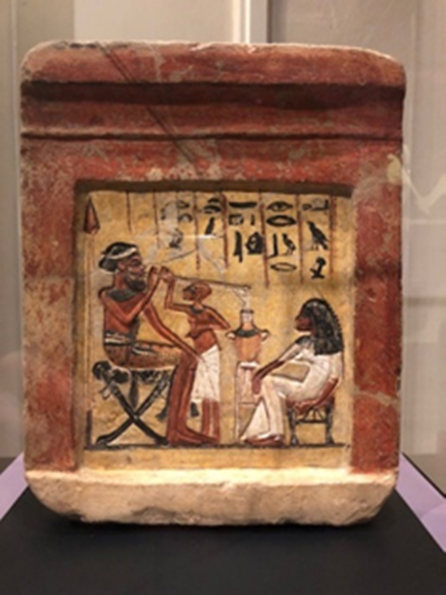

Review of the Narrative
The Leiden exhibition did not show how port-city society was shaped, nor how its common spaces gave rise to local cultures, anachronistically like ‘public spaces’. So-called ‘material biographies’ - the way things tell the stories of people's lives as well as the life story of the objects themselves (cf. Kopytoff 1986; Hoskins 1998) - could have extended the insights about this ancient port city. Whereas hieroglyphic walls witness the materialisation of selfhood and, as such, extending material biographies was a significant concern in Ancient Egypt (Meskell 1998; 2003; 2004), this was clearly different in Byblos. Artifacts that survived throughout time introduced symbols too, but lacked hieroglyphic signs. Many were in fact Egyptian, or look-alikes, and as such they carried meaning through design and imagining. Following the anthropological basepoint, that the lines between people and things are culturally variable and differently drawn in each society (Malinowski 1922; Mauss 1924), the definition of the port-city particularly related to ancient times would be better supported bya deeper understanding of its urban life through its material culture (cf. Hodder 1989). Similarly, understanding port-city societies in space could guide future archaeological research in and around Byblos (cf. Van Voorden et al. 1999). Contemporary insights of urban design in antiquity, landscape history, archaeological heritage and ancient society help to extend the stories that the exhibited objects tell us.
To start with the urban design, for millennia a natural shelter was a premise for the commencement of port-cities. In addition, settlers and visitors of port-cities benefit from the availability of fresh water at the shore. The common Holy Well in the valley of ancient Byblos, situated on a promontory between two summits, provided this necessity for human life at its centre. The network of common spaces became organised around it. Moreover, being located safely on a hill, streets do not come close to the sea. Together with the cliffs, larger buildings and city walls, this increased disconnection between the settlement and harbour. Only the royal palace was located on the cliff edges. Yet, its own narrow postern gate led to a north-western plateau, not directly to the water. The main artery road ran from the well to the inland mountains, via a north-eastern gate and a series of spacious squares. Another on-land route apparently had been blocked after closing the northern gate in an early stage. Ultimately, only a few long narrow, somewhat meandering streets led through a dense urban fabric of small buildings via the south-eastern gate to the Qassouba river; the local stream connecting to the natural harbour of el-Skhiny bay in the southern lowlands.
This layout was typical for other port-cities nearby. Similar urban patterns could be discovered along the Levantine coast (Carayon, Marriner & Morhange 2012; Kertai & Lendering 2022, p. 19, 55). Exemplary is the ancient port-city of Ugarit in Syria, where the first farmers, hunters and fishermen settled already in the 8th millennium BCE. This settlement was likewise characterized by a tell, a settlement on a hill and oriented away from the sea, while being organised in a centric manner and having a wall with two main gates as well as a postern gate close to a palace. There, a southern thoroughfare led to a local river, connected to the nearby natural bay. Ugarit displayed a notable development around 3000 BCE like Byblos and without an apparent abrupt break around 2200 BCE. The difference was that this port-city exchanged primarily with northern regions all the way to Cilicia (today’s Southern Turkey) and the inland Levant corridor along the Euphrates. Trade with Egypt seemed to have been established later (Yon 2006, p. 15-26, 89-90). Byblos might not necessarily be the first port-city, and it was a ‘tell’ like inland tells. The harbour bays, fresh waters, and accessible hinterlands were all natural and welcome conditions. Actual relations between nature and port-city artifice had to be established outside of the tell (cf. Francis-Allouche & Grimal 2019). The bay and accessible inland riverbanks were maritime spaces to a certain degree. Possibly improved to the needs for shipping with some sort of established landings or on-site construction sites for the Byblos ships. So, whereas the tell had minor direct connections to the sea, the excavated objects did show close ties. Hence, extended mapping of the historic and archaeological landscape is essential for deepening our understanding of Byblos as a port-city connected by maritime commodity networks.
Secondly, from the history of the landscape, it is somewhat difficult to imagine the transport of the giant cedar trunks over the most nearby Qassouba river. Although essential for the provision of fresh water, and presumably also short-distance transport, this river did not reach the mountains that high and might have been too narrow overall. So, against the current presumption (Kertai & Lendering 2022, p. 29, 41-3), perhaps smaller trees were shipped to Egypt first, or bigger trees were growing closer to the city. Alternatively, the curators referred to the Ibrahim or Adonis river for transport of the large trunks instead. This river is much wider indeed, and flows within the ancient Byblos dominion, thereby making accessible the higher territories at levels of 1300 km above sea level. The large cedar trees used to grow here in the past. Still, in this case, river transport would deliver wood to the sea shore at least 8 km south of Byblos. This would reflect a transport hub at a distance that is nowadays quite common. Given the observation that the Ibrahim river drops steeply through a series of falls and passes through a gorge carved through the mountains, it had to be an adventure trail formed by a specific network of (common) spaces supporting transhipment activities up to its estuary. Perhaps rough tracks, bridges, dams, steps and ramps assisted the exceptional transport over this river. In addition, transport was only possible during a certain period of the year, namely in February, when heavy rains washed so much of the red soil into the river that “it seemed to be filled with blood” (Gresswell & Huxley 1965, p. 21, 29). Hence, mapping the exact commodity transport and interventions in the larger river territory and mountains remains a missing link in a thorough understanding of Byblos as a port-city. Also, the mining of cherished stones and gemstones required mountain trails. Mapping this is challenging, because of the scarcity of sources, and future inland excavations also have their own issues regarding natural processes that change the landscape, such as erosion. Furthermore, wood structures potentially decay rapidly. Only if the burial environment remained unchanged, there might still be something to find up there in the mountains.
Thirdly, the risky transport activities of the oversized wood commodity over the rivers must have affected urban life in a conscious way. Wood workers, transporters, ship builders, and port workers were needed to harvest, stack, process and transport the cut timber. Although they must have lived in the port-city territory, how society was exactly organized there, either through slavery or executed by free inhabitants is difficult to determine. As stated in the exhibition publication: “we only have a view on the urban elite”, consisting of maybe one percent of the population. Still, there might be more information to be found on the majority of common people (Kertai & Lendering 2022, p. 11). The exhibition displayed a rather large selection of sculptures of people with deformed bodies. This material culture is unique for the region. Although it might be God-given, the elite would not be portrayed in this way. For example, an excavated dwarf God from Nubia is evidence of deformity and disease and is found mainly in the portrayal of servants and workers, knowing that unskilled manpower played a significant role at places where heavy labour was needed (Dasen 1993, p. 25, 60-1, 137-41; David 2003, p. 236, 268-9, 322; David 2017). Together with a raging river and turbulent sea, this indicates that life was probably not always prosperous in Byblos. This was also reflected in the finds of specific artifacts such as hippos, who in Egypt became associated with chaos, and symbolised death (but also fertility).
To conclude
What constructs the port-city narrative of Byblos is for an important part based on the objective material culture found within the walls of its tell. By diving deeper into the witnesses of ancient society and space, and thus urban life, subjective material biographies should not be forgotten. They support a deeper understanding of ancient port-cities, and pave the way to understanding the wider territory. The ancient type of the tell is unique, because it tells a different tale than its territory. Although tell and territory were interrelated in terms of space, society and culture, the actual maritime activities were likely to have taken place within the distance of civic life. This should be highlighted in the port-city narrative on Byblos, and could be added to additional material biographies in the future and even stimulate further study on the wider territory.
Moreover, regardless of the question if Byblos is indeed the oldest port-city, we remain curious about the mixture of differences and similarities between this ancient port-city and what we have since come to understand as a port-city. In this ancient case, we can already observe a certain specialisation in commodities to be traded overseas and a monocultural extraction area. The role of infrastructure; the importance of knowledge and techniques for navigation and ship construction; all the labour needed for the heavy work; the value attached to bureaucratic transparency embodied by the Egyptian cedar overseer; and the fact that maritime trade always remains uncertain as reflected in the worship of gods - compared to current insurance schemes perhaps; all this resonates to challenges typical of port-cities and resulting in specific societal, cultural and spatial makeups. Luckily, ‘Byblos, The World’s Most Ancient Port City’ was not the last exhibition of its kind. Its connecting exhibition trilogy is planned to come full circle in the traditional (19th century) Lebanese house in Byblos itself. We are already looking forward to it.
Acknowledgements
This blog has been written in the context of discussions in the LDE PortCityFutures research community. It reflects the evolving thoughts of the authors and expresses the discussions between researchers on the socio-economic, spatial and cultural questions surrounding port-city relationships. This blog was edited by the PortCityFutures editorial team: Vincent Baptist.
References
Breasted, James Henry (1906). Ancient Records of Egypt Historical Documents from the Earliest Times to the Persian Conquest, Volume II: The Eighteenth Dynasty. Chicago: The University of Chicago Press.
Carayon, Nicolas & Marriner, Nick & Morhange, Christophe (2012). “Geoarchaeology of Byblos, Tyre, Sidon and Beirut.” In Rivista di Studi Fenici, Fondata da Sabatino Moscati. Pisa / Roma: Fabrizio Serra Editore.
Dasen, Veronique (1993). Dwarfs in Ancient Egypt and Greece. Oxford: Oxford University Press.
David, Rosalie (2003). Handbook to Life in Ancient Egypt. New York: Facts on File.
David, Rosalie (2017). “Egyptian Medicine and Disabilities, from Pharaonic to Graeco-Roman Egypt.” In Disability in Antiquity: Rewriting Antiquity, pp.75-89.
De Volkskrant (2022). “Byblos Bloeide.” 17 October 2022, pp. V1-V2, V4-V5.
Erman, Adolf & Grapow, Hermann (1931, republished 1971). Worterbuch der ägyptischen Sprache. Berlin: Akademie Verlag.
Fabre, David (2005). Seafaring in Ancient Egypt. London: Periplus.
Francis-Allouche, Martine & Grimal, Nicolas (2019). “Honoring the Lady of Byblos.” In In the Footsteps of Honor Frost: The Life and Legacy of a Pioneer in Maritime Archaeology, pp.109-38.
Frost, Honor (1969). “The Stone-Anchors of Byblos.” Mélanges Université Saint-Joseph (MUSJ) 45: 425-42.
Frost, Honor (1970). “Bronze-Age Stone-Anchors from the Eastern Mediterranean, Dating and Identification.” The Mariner's Mirror 56.4: 377-94.
Gresswell, R. Kay & Huxley, Anthony (1965). Standard Encyclopedia of the World's Rivers and Lakes. New York: George Rainbird Ltd.
Hodder, Ian (ed.) (1989). The Meanings of Things, Material Culture and Symbolic Expression. London: HarperCollins.
Horn, Siegfried (1963). “Byblos in Ancient Records.” Andrews University Seminary Studies (AUSS) 1.1: 52-61.
Hoskins, Janet (1998). Biographical Objects: How Things Tell the Stories of People's Lives. London & New York: Routledge.
Kertai, David & Lendering, Jona (2022). Byblos, ‘s werelds oudste havenstad. Leiden: Rijksmuseum van Oudheden / Sidestone Press.
Kertai, David & Zaven, Tania (eds.) (2023, forthcoming). Byblos, Gateway to the World. Leiden: Sidestone Press.
Knappett, Carl (2018). “From Network Connectivity to Human Mobility: Models for Minoanization.” Journal of Archaeological Method and Theory 25.4: 974-95.
Koch, Roland (1990). Die Erzählung des Sinuhe: Bibliotheca Aegyptiaca 17. Brussels: Fondation Égyptologique Reine Elisabeth.
Kopytoff, Igor ( 1986). “The Cultural Biography of Things, Commoditization as Process.” In The Social Life of Things: Commodities in Cultural Perspective, pp. 64-91.
Malinowski, Bronislaw (1922). Argonauts of the Western Pacific. London: Routledge.
Mauss, Marcel (1924) “Essai sur le don: Forme et raison de l’échange dans les sociétés archaïques.” In L'Année Sociologique: 30-186.
Meskell, Lynn (1998). “An Archaeology of Social Relations in an Egyptian Village.” Journal of Archaeological Method and Theory 5: 209-43.
Meskell, Lynn (2003). “Memory's Materiality: Ancestral Presence, Commemorative Practice and Disjunctive Locales.” In Archaeologies of Memory, pp.34-55.
Meskell, Lynn (2004). Object Worlds in Ancient Egypt: Material Biographies Past and Present. London & New York: Routledge.
Montet, Pierre (1928). “Notes et documents pour servir à l'histoire des relations entre l'Ancienne Égypte et la Syrie.” In Kêmi, Revue de Philologie et d'Archéologie Égyptiennes et Coptes I, pp. 19-28.
Montet, Pierre (1954). "Byblos et les navires giblites." In Kêmi, Revue de Philologie et d'Archéologie Égyptiennes et Coptes XIII, pp. 62-70.
Piehl, Karl (1885). “Sur l'origine des colonnes de la salle des caryatides du Grand Temple de Karnak.” In Actes du Sixième Congrès International des Orientalistes tenu en 1883 à Leide, Troisième Partie, Section 3, pp. 201-19.
Pulak, Cemal (1998). “The Uluburun Shipwreck: An Overview.” International Journal of Nautical Archaeology 27(3) pp. 188–224.
Renan, Ernest (1864). Mission de Phénicie. Paris: Imprimerie Impériale.
Tobin, Vincent Arieh (1995). “The Secret of Sinuhe.” Journal of the American Research Center in Egypt 32: 161-78.
Van Voorden, Frits & Van Oers, Ron & Sabet, Mohamed (1999). Byblos, Lebanon: Project Identification and Implementation. Proceedings of the International Workshop held at Delft University of Technology in the Netherlands from 27-29 April 1999. Paris: UNESCO World Heritage Centre / Delft: Delft University of Technology.
Wachsmann, Shelley (1998). Seagoing Ships & Seamanship in the Bronze Age Levant. London: Chatham Publishing.
Welter-Schulte, Francisco (2008). ‘Bronze Age shipwreck snails from Turkey: First direct evidence for oversea carriage of land snails in antiquity.’ In: Journal of Molluscan Studies. 74: pp. 79–87 DOI: 10.1093/mollus/eym047.
Yon, Marguerite (2006). The City of Ugarit at Tell Ras Shamra. Winona Lake: Eisenbrauns.
